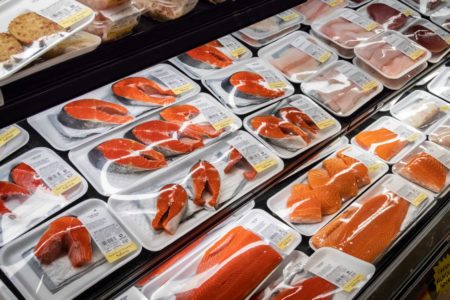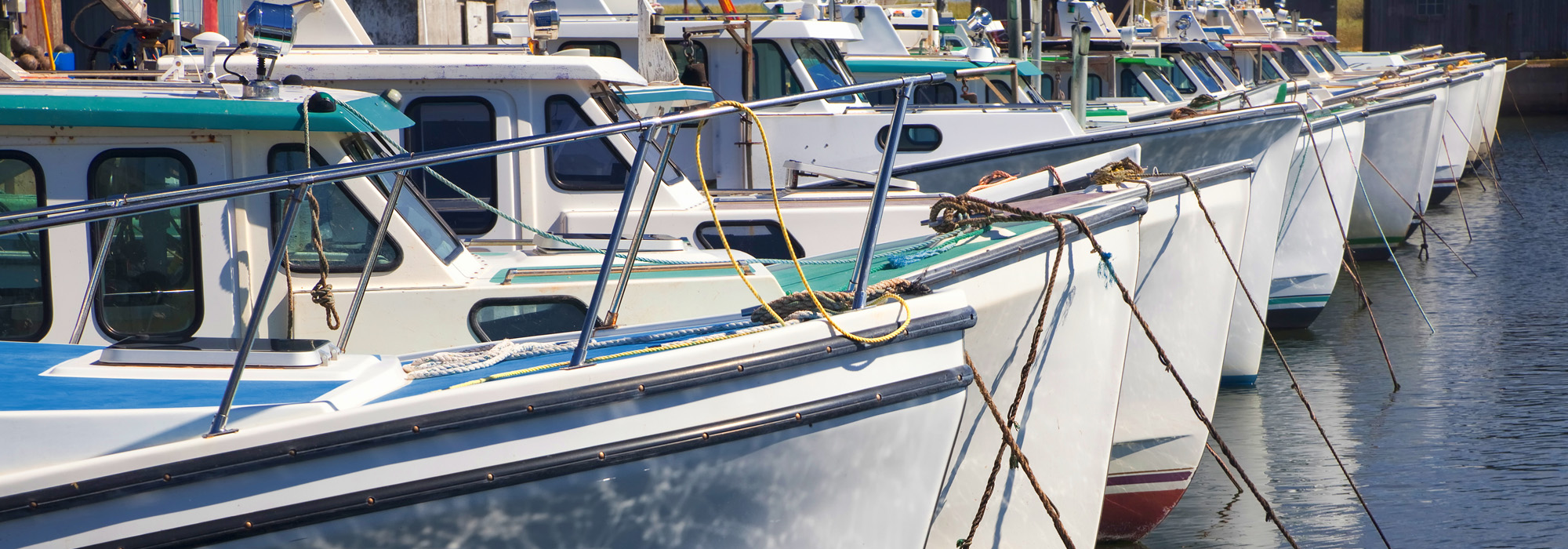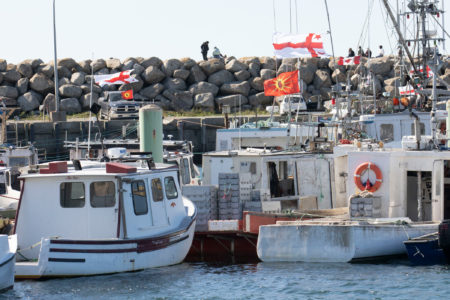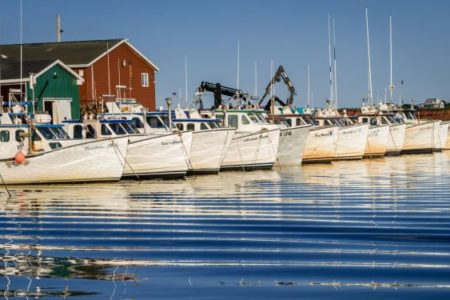
The federal government has set promising new directions for the sustainability of Canada’s fisheries and oceans. Among various commitments, Minister Hunter Tootoo will increase the extent of marine protected areas and review legislative changes made by the previous government. These initiatives will help bring Canada in line with other major coastal nations.
While they are commendable, these objectives are not sufficient to ensure that Canadians benefit over the long term from productive populations of the fish (such as cod, herring, salmon) and invertebrates (shrimp, lobster, crab), which have formed the core of our fisheries. In order to be able to generate sustainable social and economic benefits from these wild natural resources, Canada needs to also rigorously implement its long-standing laws and policies related to sustainability.
The incomplete implementation of these laws and policies has resulted in many of Canada’s marine fisheries not being biologically or economically sustainable over the past few decades. For instance, Canada’s annual total catch of marine fishes decreased by 71 percent between 1990 and 2014, and in January 2016, researchers at Yale and Columbia universities ranked Canada 99th out of 136 countries on fish conservation, which is a key element of sustainability. According to the evidence, the main reason for Canada’s poor fisheries status is unsustainable levels of exploitation.
Fortunately, the new federal government clearly sees sustainability as a major priority. Prime Minister Justin Trudeau’s ministerial mandate letters mention sustainability no fewer than 21 times, ranging across 12 such diverse departments as Finance, Environment and Climate Change, and Agriculture and Agri-Food. However, the single reference to sustainability in the mandate letter sent to Minister Tootoo of the Department of Fisheries and Oceans (which includes the Canadian Coast Guard) refers not to wild fisheries but to aquaculture (the rearing of organisms in captivity throughout their lives). Missing from that letter is a reference to sustainable harvesting or, more generally, sustainable use of renewable resources from wild marine populations. Wild-caught seafood – a key global source of protein – comes mainly from coastal fisheries.
This omission, perhaps an inadvertent oversight, suggests that while it is important that there be a clear objective of sustainable use of marine resources, laws and policies must also be synchronized to meet that objective. Minister Tootoo can do this, and to start with he could set Canada’s sights on becoming a leader in marine sustainability, an appropriate goal given that our oceanic border, at over 200,000 km, is the longest of any nation – nearly four times longer than the next longest one.
On paper, Canada has made a good start toward reaching that leadership goal. It has long acknowledged the benefits of sustainability in the coastal realm. The Oceans Act (1996) offers a strong, clearly articulated legislative foundation for the sustainable development of marine resources (objectives that are absent from the Fisheries Act). As well, Canada has committed to following the United Nations’ Food and Agricultural Organization’s (FAO) 1995 Code of Conduct for Responsible Fisheries, and in 1999, Canada ratified the United Nations Fish Stocks Agreement (UNFSA). The latter two documents set out principles for fisheries conservation and management that are based on the precautionary approach. In addition, DFO established a Sustainable Fisheries Framework (2009), which incorporates the precautionary approach to promote fisheries conservation and sustainability.). Together, these policy elements match the best of international approaches.
The government has not adequately implemented actions from the Oceans Act and sustainable-harvesting policies.
With such a strong foundation for sustainability, what has gone wrong? Why are so many of Canada’s ocean fisheries so unproductive now? We think it is because the government has not adequately implemented actions from the Oceans Act and sustainable-harvesting policies, which place high priority on maintaining productive wild marine fish populations over the long term.
Specifically, despite well-intentioned efforts, Canada has lagged in fulfilling many national and international obligations. Take for example the implementation of the precautionary approach. The FAO Code of Conduct and the UNFSA provide clear direction: each fishery should have a target reference point (something to aim for), a limit reference point (something to avoid), and a harvest-control rule (which specifies the appropriate level of fishing pressure, depending on how close the stock is to its limit or target). However, Environment Canada states on its website, « While most of the major [155] stocks have had some components of the precautionary approach implemented (76%), only 22% have had all components fully implemented.” This is 16 years after Canada ratified the United Nations Fish Stocks Agreement.
As a specific example of such deficiencies, for eight of the nine depleted Canadian east-coast cod stocks, there are no recovery targets more than 20 years after their demise. In addition, the sole harvest-control rule for those cod stocks is open to multiple interpretations, rendering it meaningless and unenforceable.
For such fish stocks, it is necessary to establish scientifically rigorous reference points and harvest-control rules. In the absence of a recovery target, it is misleading to argue that one has a recovery plan. In the absence of an unambiguous harvest-control rule, neither society nor industry knows whether a proposed catch level is consistent with the objective of achieving a particular target within a defined period. As well, in the absence of reference points and control rules, there is no means of auditing the effectiveness, or tracking the record, of fisheries management actions. This need for reference points and harvest-control rules also applies to populations that are not depleted.
A key question is this: If jurisdictions such as the United States, the European Union, Norway, Australia, and New Zealand – which collectively account for more than 50 percent of global GDP – have successfully been able to implement a precautionary approach to management policies for most of their fisheries, why hasn’t Canada?
After two decades of budget cuts the DFO’s science branch is seriously understaffed and does not have sufficient operating funds to develop the scientific advice that managers need to sustainably manage most major fish stocks.
One reason may be that after two decades of budget cuts the DFO’s science branch is seriously understaffed and does not have sufficient operating funds to develop the scientific advice that managers need to sustainably manage most major fish stocks. This concern was raised in 2012 by a Royal Society of Canada (RSC) Expert Panel, which also concluded that Canada’s lack of significant progress cannot be attributed to a lack of relevant policies; plenty of those exist on paper. Instead, there has not been full implementation of sustainability policies.
The RSC Expert Panel identified two fundamental problems. The first is conflicting regulatory responsibilities within DFO. On one hand, DFO has statutory responsibilities under the Fisheries Act to promote industrial and economic activity. On the other, it is responsible for conserving and protecting marine living resources (Oceans Act, Species at Risk Act). The more that DFO is, or is perceived to be, a promoter of the exploitation of marine biodiversity and ocean life, the more difficult it becomes for the department to make regulations that allow harvesting and still conserve and protect spawning populations and biodiversity in the public interest.
Second, the existing Fisheries Act, which dates from 1868, gives absolute discretion to the minister, meaning that she/he is not bound by prescriptive legislation to act in any particular manner (for example, reducing catches by some specified amount) if a given set of circumstances occurs (such as overfishing). Ministerial discretion might offer political flexibility, but it is also vulnerable to pressure and counter-productive demands from vested interests.
In the United States, in contrast, the Magnuson-Stevens Fishery Conservation and Management Act curtails such discretionary decision-making authority, increases accountability and strengthens the links between policy and science. Regional fishery management councils are required to adhere to binding scientific advice on catch limits, to prevent overfishing and to rebuild overfished stocks. Environmental, economic and social impact assessments are required for proposed fishery management plans and amendments.
One might well link the glacial pace of Canada’s statutory and policy implementation on coastal sustainability with insufficient scientific resources as well as with concerns about regulatory conflict and ministerial discretion. The simple fact that other developed countries have been able to effectively and efficiently implement the precautionary approach in resource management (targets, limits, harvest- control rules) and other sustainability policies indicates that the barriers to implementation in Canada are specific to Canada.
These problems are resolvable by Parliament, with one single, bold, and hardly unprecedented initiative. By drawing upon the experience from the legislation in the United States, Canada could modernize the Fisheries Act to (1) embrace ecologically sustainable development as an overarching objective for fisheries management; (2) mandate the implementation of key sustainability principles such as precautionary and ecosystem-based management approaches, fair and just treatment of present and future generations of Canadians, and public participation; (3) specify requirements for environmental, social and economic impact assessment; (4) provide legislative requirements and guidance to fully implement the DFO’s Sustainable Fisheries Framework; and (5) identify conservation of biodiversity as a core consideration in the development of fisheries management plans. Such legislative reform would bring Canada up to the standards of other major fishing nations.
According to the Supreme Court, it is the Fisheries minister’s duty to manage, conserve, and develop fisheries on behalf of Canadians. Perhaps it’s useful to imagine the minister as a financial manager, responsible for a major investment portfolio. In this case, he must protect the ‘capital’ held by all Canadians, which is the reproductive capacity of fish populations. He should spend (or harvest) only the ‘interest’ generated by those populations (that is, the biological production over and above what is needed to maintain the populations at a constant level). The minister must maintain a firm plan for spending this interest, or the portfolio will suffer.
The longest coastline in the world gives Canada the geographical imperative to be the international leader on matters pertaining to coastal oceans’ sustainability. For the sake of Canada’s environmental health, socio-economic prosperity, food security and geopolitical influence, we must replace societal and governmental ambivalence with meaningful action. The modernization of Canada’s Fisheries Act, spearheaded by Minister Tootoo, would be an act of bold, meaningful and sorely needed political leadership. Recovering and sustaining the health of our fisheries and oceans is a nonnegotiable responsibility to future generations that we cannot ignore.








